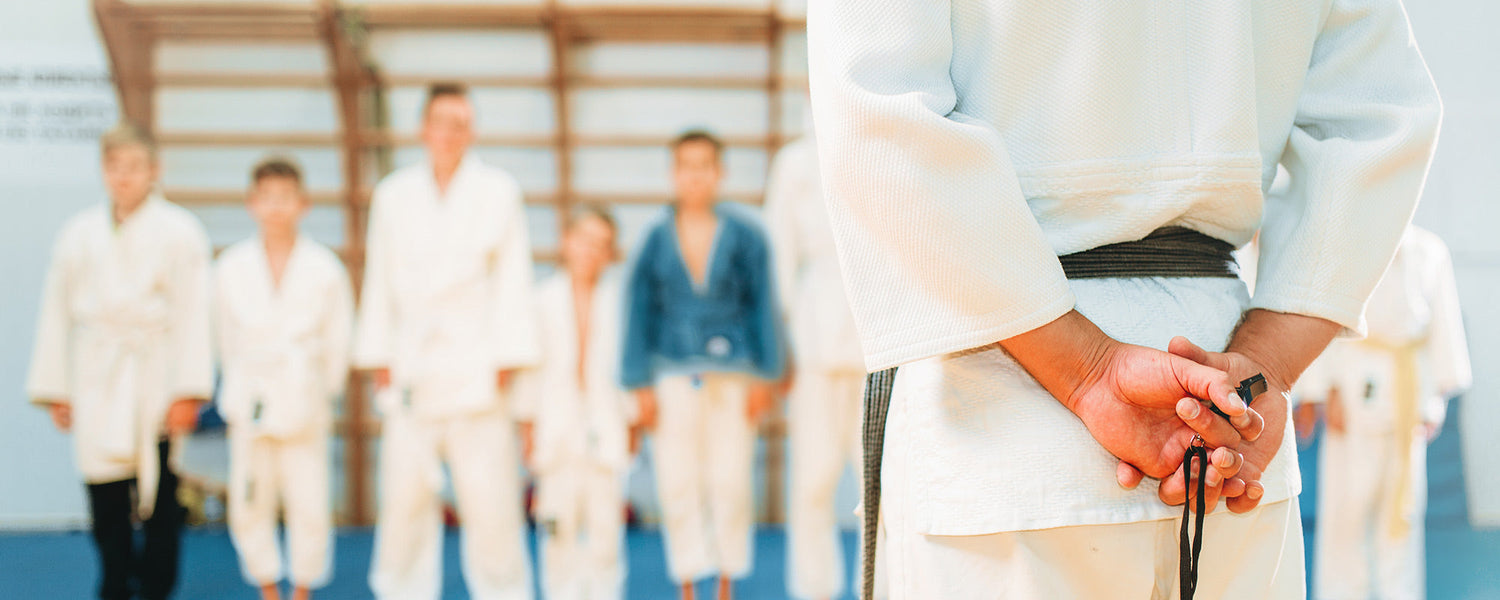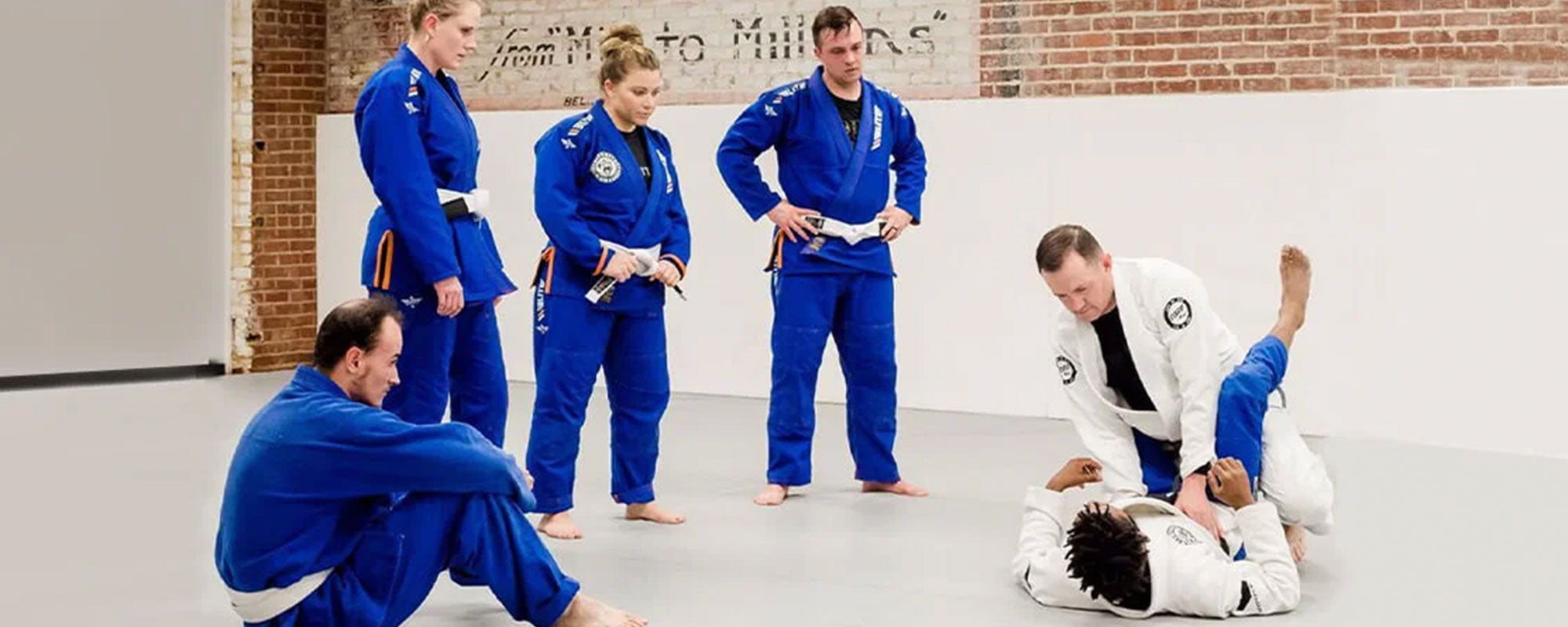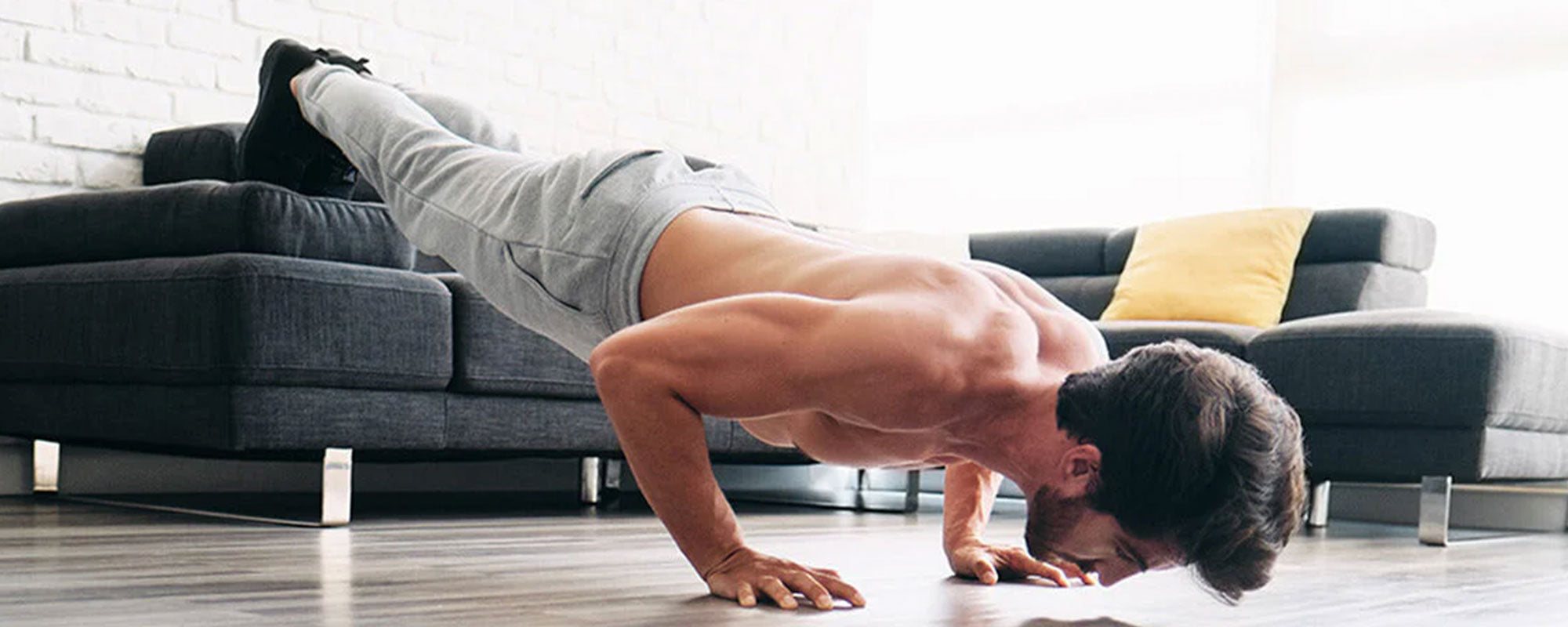Table of content
1. Why Do You Need Stretch BJJ Workouts?
Every BJJ practitioner knows the importance of having a physically fit body in the sport.
Even in the initial stages, almost all beginners encounter various forms of fatigue and pain.
Since our bodies are nowhere near used to the kind of movements and positions, we take in BJJ, there’s no shame in admitting that it gets painful.
However, this is where rest is recommended without delay.
You can’t go on with pain and neither should you as it will only worsen your medical condition.
2. Is BJJ Supposed to be Painful?
Do the above-mentioned facts make BJJ inherently painful (apart from the submissions)?
The answer depends on your skill level and the kind of competition you engage in.
If you’re a beginner and only spar with classmates and fellow BJJ athletes, you can expect a little pain in the beginning.
The wear and tear of the muscles can be considered painful.
If you’re a professional, as long as you’re in a bout with another BJJ athlete, no.
Professional BJJ athletes make sure never to inflict unnecessary pain unless they’re in a tough bind and need to get out by throwing a few elbows and punches.
This martial art wasn’t inherently designed to inflict pain.
Rather, the purpose of BJJ is to subdue your opponent by making them admit defeat.
That’s why even in extreme combat sports like UFC, BJJ athletes don’t inflict pain but instead, focus on countering and submitting their opponents.
3. What Causes Pain in BJJ? And the Solution
It’s crucial to note that most of the injury’s beginners and even professionals like Rener Gracie have sustained were their own mistakes.
It’s common for people to overestimate their flexibility and musculoskeletal endurance.
Especially when people are running solo BJJ drills or competing under pressure.
For example, some of the most common injuries in BJJ include twisting your ankles, hyperextending the knee, etc.
Some of these result in the tearing of the ACL (Anterior Cruciate Ligament).
A scenario of getting a torn ACL can be by making sudden pivotal or rotational movements on a locked knee.
This injury has rendered many in beds for at least 6-9 months and is one of the most common BJJ injuries.
It Doesn’t End There
Unfortunately, the problem that persists way more than it actually should is none other than negligence.
In an interview, even legends like Rener Gracie have told their stories of how negligence resulted in minor injuries becoming disastrous.
The 4th degree BJJ black belt martial art instructor once thought he had a minor quadricep injury when his leg started to hurt after a match.
Paying no heed to it, he continued training after the fight.
The pain only grew to the point that one day, he couldn’t walk.
After finally going to the doctor, it was revealed that it was a nerve injury that now warranted surgery.
For at least 10 months, the athlete couldn’t get on the mat, regardless of his passion and skills.
The Solution!
BJJ requires the following physical attributes in every athlete:
- Height
- Strength
- Endurance
- Flexibility
However, in no way is one attribute superior to another.
Time and again, athletes like Mitsuyo Maeda, Royce Gracie and others have shown that there was no athlete with the maximum of a specific attribute that they couldn’t beat.
For example, Royce and Maeda took down opponents that outweighed them and were significantly larger, with more strength and endurance.
Developing all of these attributes is not just your only option, but it’s also going to be time-taking.
Each of these attributes will require jiu-jitsu workouts that involve BJJ weight training, BJJ cardio, and more.
This post will tell you all about improving flexibility, something that most people find rather difficult to understand the logic of.
This is especially true for people who’ve worked out in the gym.
You might be familiar with strength and endurance, but you might not be prioritizing flexibility.
As your body goes through a series of strenuous movements, it could result in soreness, injuries, or even skin problems because you didn’t have good rashguards.
So, what does a newbie BJJ athlete do to improve flexibility?
To make the situation easier, you can try engaging in stretch workouts for BJJ.
These can help bring a beginner’s body in shape to sustain and hold extended positions without cramping muscles or hurting joints.
Here’s a list of important or key stretch workouts for BJJ beginners that are also used as warm-up exercises by professionals:
4. BJJ Workouts: Difference Between Active and Passive Flexibility
Before we get to the stretching exercise, you should understand the concept of Active and Passive flexibility.
Flexibility can be defined as the range of motion your body allows you to reach before presenting limitations.
It can be of 3 types:
- Dynamic Flexibility
- Static-Active Flexibility
- Static-Passive Flexibility
Dynamic Flexibility
This is defined as kinetic flexibility - the ability to perform dynamic movements of the muscles to stretch the limb to its full range of motion.
Static-Active Flexibility
The ability to assume and consistently maintain a position that extends your muscles to their full range of motion.
In static-active flexibility, you use the tension in your agonists and synergists.
Another important thing to know is that in static-active flexibility exercises, you don’t apply any external support, e.g. lifting your leg up high without any support.
Right off the bat, this is the most important type of flexibility exercise for BJJ athletes.
Static-Passive Flexibility
Static-passive involves assuming extended positions and maintaining them with only the limbs, bodyweight balancing, or some other apparatus.
The fact that there’s an external component involved in the mix makes static-passive flexibility exercises more relevant to BJJ.
Since you’re more likely to be using your opponent’s body to balance yourself most of the time, you’ll need to engage in static-passive flexibility workouts.
5. Key Stretch BJJ Workouts Beginners and Professionals
Ankle Rotations
- To improve flexibility in your feet, try doing ankle rotations.
- This simple exercise can be done on a floor mat or while sitting on a chair.
- The idea is simple - stretch your feet in angles that they don’t go normally.
- For example, while lying on the ground, raise your foot up and rotate it left to the right but keeping your leg straight.
- Hold the position on either side for at least 10 seconds before switching.
Static Calf Stretch
- To do a static calf stretch, you need a wall to lean against.
- With your arms and hands at shoulder height, place them in front of you and brace yourself.
- Take your left foot and put it one step backward while keeping the leg straight.
- Bend the right leg while keeping your left heel planted firmly on the ground.
- Lean and you’ll feel a little stretch in your left leg.
- If you don’t feel enough of a stretch, step back a little further and repeat the process.
- Make sure to do each side equally.
Bridges
- To do a bridge, all you have to do is lie down on the ground.
- Keep your hands facing down on the ground to the side of your hips.
- Your feet should be close to your hips, completely on the ground with your knees bent.
- Now, raise your hips upward as much as you can while keeping everything else straight.
- You’re going to be positioning your hips, shoulders, knees and waist to form a straight line.
Hip CARs
- Short for controlled articular rotations, hip CARs are circular movements of the hip to improve flexibility in the area.
- By constantly improving your stance and posture, this BJJ workout will enable you to reach the maximum range of motion for your hips.
- This will allow you to avoid injuries, sprains and limitations in combat.
- The trick to executing a CAR is doing it slowly.
- Here’s a list of steps for this BJJ workout to follow:
- Get down on all fours and lift your right leg up a little.
- While keeping the same angle of your knee, keep raising that leg in an anti-clockwise direction, to bring it outward from your body.
- When you finally reach the limit, hold the position before you rotate the leg again to have your kneecap facing down and the sole of your shoe facing the ceiling.
- This will improve the tendon limitations as well as mobility issues in your hips.
Lunge Hip-Flexor Stretch
- The difference between a simple lunge and a hip-flexor lunge is that the stretch is felt at the hips.
- To do this, have one (e.g. left) leg in front just like you would in a lunge.
- Have the other (right) leg bent to have the knee cap touch the ground, with the rest of your (right) leg lying behind you.
- While keeping your hips tucked and your lower back flattened, stack your hips over your back knee.
- Keep pressing the knee on the ground to increase pressure on the stretch felt by the hips.
- Do this with both legs for equal durations which will be increased as you progress to more intense jiu jitsu workouts.
Crossover Glute Stretch
- The crossover glute stretch involves stretching all your limbs straight out on the ground.
- Next, you take your left knee, bring it all the way to the right.
- Bring it up as high as you can till you feel the stretch and hold your knee cap with your right hand.
- Meanwhile, your left hand should be stretched to the far left.
- This is an important exercise to improve your tendons and joints while maximizing your range of motion.
- Not only will it help you reduce the strain, wear and tear that your muscles feel but it will also help you reduce the chances of injuries.
Lying Hamstring Stretch
- The lying hamstring stretch is a BJJ stretch workout that involves improving your mobility and flexibility while reducing the chances of developing back problems like sciatica.
- For this exercise, you might require a band.
- That’s because most of us aren’t used to stretching our legs out straight.
- Lie down on the ground.
- Take the band and have it gone over your foot and balanced on the deepest part of your foot.
- If the band is too high or too low, expect a nasty slap from the band.
- Once you’re sure that it’s balanced, stretch your leg out straight while pulling on the band.
- Keep your knee slightly bent to make sure the stretch is focused on your hamstrings.
- Another method people like to try is to use the band around the knee and pull.
- However, don’t make it come all the way up the first time if you feel pain.
- As stated above, not all of us have flexible bodies as of now. But that doesn’t mean it’s too late for you to start BJJ or BJJ workouts.
- Therefore, take your time and gradually increase the strength at which you pull.
- Hold the stretch for at least 10-30 seconds and switch.
6. BJJ Exercises to Improve Flexibility in the Spine:
- To avoid critical spinal injuries that can change your lives forever, it’s best that you work on improving spinal flexibility.
- Our spine consists of 24 vertebrae classified into 5 groups, i.e. cervical, thoracic, lumbar, sacrum and coccyx.
- The cervical spine is in your neck, beginning at the base of the skull.
- The sacral area (sacrum) is at the bottom
- The thoracic spine is the one that’s above your stomach whereas the one below it is known as the lumbar spine.
- Most of the workouts we engage in don’t normally work the thoracic spine.
- There’s no telling what kind of permanent damages you can expect if you somehow end up injuring your thoracic spine.
- Fortunately, it’s surrounded by a skeletal structure that ensures no outside collisions can hurt it.
- However, it’s still possible to twist or damage it from the inside.
- A sudden movement with intense pressure in an abnormal way can have serious consequences.
- That is why you need to work your thoracic spine.
Foam Rolling for the Thoracic Spine (Upper Back)
- To improve flexibility in this area, you need a rolled foam that you can balance your upper back on.
- Firstly, do a few foam rolls to soften the tissue surrounding the thoracic spine.
- This also reduces spasms and tightness in muscles that end up limiting the mobility in your joints.
- Next, rest the middle part of your back on the foam and bend your upper back backward to separate it from the lower back.
- During all this time, keep your hands on your opposite shoulders, i.e. left hand on right shoulder.
- Using the foam as the fulcrum around which your upper back pivots, make sure you only work your thoracic spine.
- Small movements in a slow manner to induce stretches will do nicely.
- Keep the foam going up and down an inch and do the back extension at every vertebral segment.
- 10 extension movements at each segment should do. But feel free to do more at any level you think is tenser.
Butterfly Stretch (Abdomen, Core and Back)
- Sit down on the ground with your legs crossed and your back straight.
- Instead of crossing your legs beneath the thighs, have your feet meet each other by holding them with your hands.
- As you bend, make sure to keep your back straight and your face upfront.
- This stretches workout for BJJ will strengthen your inner thighs while allowing your body to have much more flexibility.
Lying Spinal Stretch for Lumbar Spine (Lower Back)
- To target the lumbar spine, try this twisting stretch by lying down on your back.
- Cross one leg over the other like you would in a crossover glute stretch, but this time the only two things that are twisting are your hips and spine.
- Holding the knee in this workout is also a worthy option as it can increase the intensity of the stretch.
- Another variation worth trying out is turning both legs on one side or tucking the crossed leg under the other or stretching it as far outward as possible.
Sitting Leg Cradle Stretch
- Last and one of the most important stretch workouts for BJJ is the sitting leg cradle stretch.
- You have to sit down and hold one foot and lift it to your chest while bending your knee perpendicular to your thigh.
- Like all the exercises above, if you find it difficult, stretch for as far as you easily can.
- Gradually, you’ll build up the flexibility and muscle endurance to increase the pressure.
7. Takeaway
Above are some of the best stretching exercises, especially for those who’re looking to work on their BJJ skills during the lockdown.
Make sure to include all these in your daily regimen regardless of how often you’re taking BJJ classes or competing.
Everyone knows that BJJ rolling and fights require the athlete to be prepared for anything.
You can’t compromise on little things such as rashguards or gis in BJJ. As stated before, a lot of medical complications can come your way in a contact sport.












Leave a comment
This site is protected by hCaptcha and the hCaptcha Privacy Policy and Terms of Service apply.